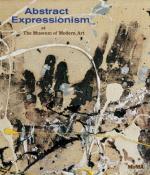|
This section contains 1,185 words (approx. 4 pages at 300 words per page) |

|
The emergence of Abstract Expressionism in New York City during the late 1930s both shocked and titillated the cultural elite of the international art scene. Abstraction itself was nothing new—modernist painters had been regulating the viewer's eye to obscured images and distorted objects for quite some time. In fact, the bright, abstracted canvases and conceptual ideals of high modernist painters such as Joan Miro and Wassily Kandinsky tremendously influenced the Abstract Expressionists. What distinguished the movement from its contemporaries, and what effectively altered the acceptable standards of art, was the artists' absolute disregard for some kind of "objective correlative" that a viewer could grasp in attempt to understand the work. The central figures of Abstract Expression-ism—Jackson Pollock, Mark Rothko, Willem de Kooning, Robert Motherwell, and Clyfford Still, among others—completely rejected any kind of traditional thematic narrative or naturalistic representation of objects as valid...
|
This section contains 1,185 words (approx. 4 pages at 300 words per page) |

|


